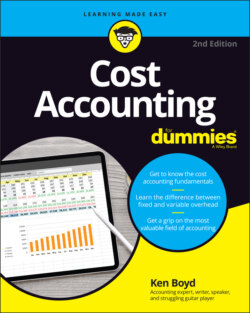Читать книгу Cost Accounting For Dummies - Kenneth W. Boyd - Страница 78
Lowering your price without losing your profit
ОглавлениеJust about everyone has shopped at the big discount stores that advertise low prices. Competitive pricing is a tool they use to get customers into the store. As a business owner, you can attract more sales by lowering prices, too. At what point would a price cut be too much — the point where you don’t generate a profit? Cost-volume-profit answers this question.
Imagine that you own a small chain of pizza parlors. You’re analyzing sales and costs for one type of pizza: a 16-inch pizza that has always sold well. Sales have increased in the past when you’ve offered a price cut, so you decide to do it again. Also, you’re moving into a big holiday weekend, and you don’t want to lose sales to competitors.
Your pizza price is $20 per unit. Your variable costs are $8 per unit. Fixed costs total $20,000. You forecast 10,000 pizza sales. Here’s how your profit looks before you reduce your prices:
Profit = $20 × (10,000) – $8 × (10,000) – $20,000
Profit = $200,000 – $80,000 – $20,000
Profit = $100,000
You estimate that sales will increase by 25 percent if you cut the price to $16. Your fixed costs won’t change. Here’s the impact of the price cut on profits.
The new sales in units is 10,000 × 125% = 12,500 units. Here’s the new profit level:
Profit = $16 × (12,500) – $8 × (12,500) – $20,000
Profit = $200,000 – $100,000 – $20,000
Profit = $80,000
Oops! Your profit’s lower by $20,000. You may have cut the price too much. Trouble is, the increased number of units sold sent the total variable cost up. Use this analysis before you cut the price — before you make a decision that would reduce your profit!
If your business is family-owned, you have one or more family members who might be upset with a $20,000 reduction in profit. They might have warned you, so look before you leap. Otherwise, you may hear the four worst words in the English language: “I told you so.”
Now you’re aware that a $4 price cut (from $20 to $16) would be too much. How would your profit look with a price of $18? As a bonus, you negotiate a lower lease payment on your store space. Assume the same level of sales (12,500 pizzas) and $15,000 in fixed costs:
Profit = $18 × (12,500) – $8 × (12,500) – $15,000
Profit = $225,000 – $100,000 – $15,000
Profit = $110,000
Trouble is, the increased number of units sold sent the total variable cost up, but variable cost is better covered by the moderate increase in sales and a big reduction in fixed costs.
